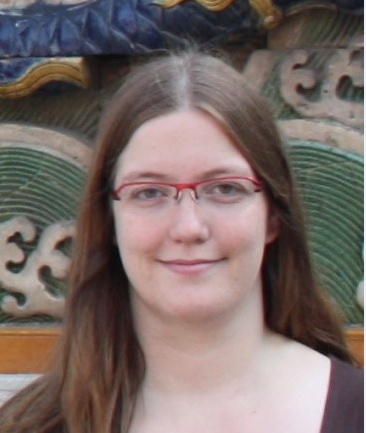immobilized carbon nanofibers; a novel structured catalyst support
Joline Roemers-van Beek is a PhD Student in the research group Catalytic Processes and Materials, her supervisor is professor Leon Lefferts from the faculty of Science and Technology
The work in this thesis explores a novel catalyst support design. In this design a macro-porous basis is used to immobilize a layer of carbon nanofibers (CNFs) agglomerates with the possible addition of a grown CNF binder layer. The synthesis of this grown CNF binder layer poses additional fundamental questions on CNF growth. The produced catalyst support is tested for activity and selectivity in a fast heterogeneous reaction, in this case nitrite hydrogenation in liquid phase.
 In Chapter 2 fundamental questions on the initiation of CNF growth on polycrystalline nickel are explored. The CNF growth is slowed down by using very low partial pressures of ethylene, aiming to observe the initiation. These experiments were performed under atmospheric pressure with extremely diluted ethylene (50 Pa), coupled to ex-situ characterization in high-resolution Scanning Electron Microscopy, X-ray diffraction and Raman spectroscopy. Additionally, in-situ experiments were conducted under low pressure conditions in an Environmental Scanning Electron Microscopy (ESEM) introducing very low quantities of ethylene in the chamber.
In Chapter 2 fundamental questions on the initiation of CNF growth on polycrystalline nickel are explored. The CNF growth is slowed down by using very low partial pressures of ethylene, aiming to observe the initiation. These experiments were performed under atmospheric pressure with extremely diluted ethylene (50 Pa), coupled to ex-situ characterization in high-resolution Scanning Electron Microscopy, X-ray diffraction and Raman spectroscopy. Additionally, in-situ experiments were conducted under low pressure conditions in an Environmental Scanning Electron Microscopy (ESEM) introducing very low quantities of ethylene in the chamber.
For reduced samples, atmospheric experiments showed very little CNFs and ESEM experiments showed even no CNFs at all. This is attributed to diffusion of C to the bulk of the Ni-foam preventing Ni3C formation as a precursor of Ni nanoparticles, the CNF growth catalyst particles. CNF growth was significant on oxidized samples, but clearly slowed down by using extremely low ethylene pressure. It is shown that an isolating layer of unreduced NiO is needed between the Ni bulk and the Ni nanoparticles resulting from gradual reduction of the NiO layer, to enable CNF growth. This isolating NiO layer is hypothesized to prevent C diffusion to the bulk and/or sintering of the Ni nanoparticles with the polycrystalline nickel in the foam. At present time distinguishing between these two hypotheses is impossible.
In Chapter 3 a catalyst support structure is produced by immobilizing a layer of CNF agglomerates on a stainless steel filter through filtration. By optimizing various parameters (e.g. CNF particle size, amount of CNFs used, pressure drop used) an immobilized CNF layer, stable at relatively low shear force flows (<0.18 m/s), is produced. The immobilized CNF layer can be removed by increasing the flow rate further, this enables selective removal of the catalyst particles after deactivation.
Removal of the CNF agglomerates takes place in pieces of the entire layer. This shows that the attachment of the entire layer to the surface of the stainless steel filter determines the stability of the CNF layer. Attachment between the CNF aggregates is apparently stronger than attachment to the filter. Different ways to increase attachment of the immobilized CNF layer to the stainless steel filter are attempted, e.g. increased pressure drop, densification, an additional binder layer. It is shown that both surface roughness of the filter on micro-scale and penetration of CNF agglomerates in the pore mouths of the stainless steel filter determine the stability of the CNF layer.
In Chapter 4, a Pd-loaded, immobilized CNF agglomerates layer on a stainless steel filter is tested for catalytic hydrogenation of nitrite. Activity and selectivity in nitrite hydrogenation is studied by varying several parameters, e.g. CNF particle size, CNF particles loading, flow regime. Flowing a H2 saturated nitrite solution through the Pd-CNF layer results in higher reaction rates compared to flowing over the layer. This demonstrates that flow-over mode is subject to mass transfer limitations due to the relatively long diffusion distance in the Pd-CNF layer, compared to flow-through mode. Varying the CNF particle size shows external diffusion limitations at the surface of the individual CNF agglomerates dominate in flow-through mode.
In Chapter 5 recommendations are made for future work, among others a reactor design using immobilized CNFs is proposed.
